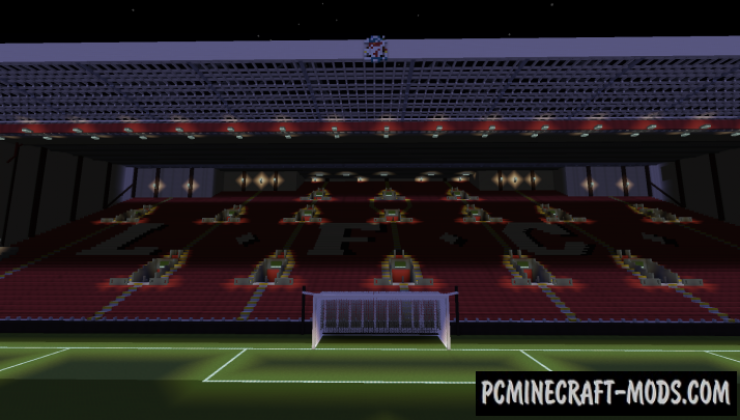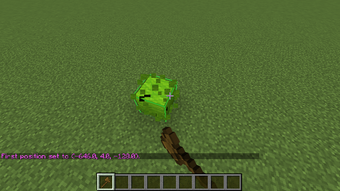- World Edit Mod For 1.16.4 Minecraft
- World Edit Minecraft 1.12.2 Plugin
- Worldedit Minecraft 1.12.2 Mod
- World Edit Minecraft 1.12.2 Commands
You may have noticed (or if you haven't yet, you soon will) that many WorldEdit commands take a 'pattern' as a parameter. Patterns range from very simple (such as a single block - stone) to very complex. Patterns determine what blocks get set into the world as a command, tool, etc operates.
WorldEdit 6.1.9 (up to MC 1.12.2) CurseForge Register Sign In. This is the last release before Minecraft 1.13. This version is compatible with. In-game Minecraft map editor - build bigger things more quickly! Filename worldedit-forge-mc1.12-6.1.8-dist.jar. Uploaded by wizjany Uploaded Aug 5, 2017.
- Available Patterns
- Special Block Data Syntax
- 1.16.2 & A note about the future of FAWE Translations are returning! Currently the option to set translations in the config.yml does nothing, throws a stacktrace because there are no other translations but English yet or possibly doesn't even exist, if you didn't update from past builds.
- By default, no one can use WorldEdit. In order for yourself, moderators, and players to use WorldEdit, you must provide the proper permissions. One way is to provide op to moderators and administrators (unless disabled in the configuration ), but providing the permission nodes on this page (through a permissions plugin) is the more flexible.
- 1 /worldedit 1.1 History Control 1.2 Region Selection 1.3 Region Operation 1.4 Clipboards and Schematics 1.5 Generation 1.6 Utilities 1.7 Chunk Tools 1.8 Superpickaxe Tools 1.9 General Tools 1.10 Brushes 1.11 Quick-Travel 1.12 Snapshots 1.13 Java Scriptings 1.14 Biomes.
Available Patterns¶
Note
This list may be incomplete as patterns are added to WorldEdit. In addition, our API allows other plugins to register new patterns, which will not be listed here.
Fortnite save the world not downloading content. Tip
Here's a video detailing some of these patterns which were added in WorldEdit 7: https://www.youtube.com/watch?v=S5wCVMf3SvM
Single Block Pattern¶
The most basic pattern of just a single block. A block is identified by two parts: the block type, and additional block states. These two links to the Minecraft Wiki, along with WorldEdit's in-built tab-completion for commands, should guide you in specifying the block you want. Additional states are always appended to the type using the syntax block_type[state1=value,state2=value,..]. Note that when states are not specified, or if some are left out, the default values will be used for those states.
Example: Single block patterns
Setting a selection to stone:
Setting a selection to a note block with a specific instrument and pitch:
Setting a selection to an oak stair block facing east with the bigger part on top:
Random Pattern¶
This pattern allows setting random blocks from any number of other patterns. The basic form is as simple as a comma-separated list of patterns, which will be chosen from evenly. You can also specify weights for each pattern with %.
Example:: Random Patterns
Setting a selection to different types of stone, equally distributed:
Setting a selection to mostly red wool, with a small amount of glass (5:1 ratio, see note below):
Note
Despite the percentage sign, weights need not add up to 100. They are cumulative and will be divided by the total. That is, 5%dirt,15%stone means 25% of blocks will be dirt, and 75% will be stone. In other words, weights are relative to each other, not to 100. Because of that, the pattern 5%dirt isn't valid. If you only want to set 5% of blocks to dirt, you should use the random noise mask.
Tip
You can use any other pattern as one of the choices, not just the single block pattern. Keep reading to see more patterns…
Random State Pattern¶
Prefixing any block type with an asterisk (*) will randomly choose between all states for that block for each position.

Example: Random State Pattern
Setting oak logs facing in random directions:
Clipboard Pattern¶
The #clipboard pattern will take blocks from your clipboard in the same arrangement. This makes it easy to build one part of a repeating complicated pattern by hand, and then repeat it over and over. You can also offset the pattern by adding @[x,y,z].
Example: Using the clipboard pattern
Replacing all existing blocks to your clipboard:
Using the clipboard in the first image to replace a hill. Note the repeating layers.
Using an offset to align the clipboard:
Type or State Applying Pattern¶
This pattern, prefixed by ^, lets you set the type or states of a block without modifying everything else. This pattern will, for example, allow you to change a spiral staircase from oak to acacia without having to worry about the stairs facing in different directions and so on. You can either specify a block type (to change block type but not states, where applicable), or any number of states (to only change those states, where applicable).
Example: Type/State Applying Patterns
Replacing all oak stairs to acacia stairs, while maintaining orientation, etc:
Removing the water from all waterloggable blocks:
Doubling up all slabs:
Block Category Pattern¶
This pattern allows setting random blocks within a block category, often referred to as a 'tag'. Tags allow grouping blocks together under a single name. Minecraft comes with many tags inbuilt (see the link) and also allows creating and modifying tags via data packs. You may already have noticed these tags being used as a mask in the example above (##slabs).
World Edit Mod For 1.16.4 Minecraft
The syntax for this pattern is ##name>, which will randomly choose between the default state of all blocks in the category. You can also mix this with the random state pattern (##*name>) to use all states, not just the defaults.
Example: Block Category Pattern Usage
Replacing all existing blocks with rainbow wool:
Setting the selection to random types of slabs, both top/bottom/double, and waterlogged at random:
Special Block Data Syntax¶
Some blocks have additional syntax for setting extra information.
Sign Text¶
You can set text on signs by separating it with a pipe symbol (|). Note that if the text has spaces, you must wrap the entire pattern in quotes '.
Example: Setting sign text
Simple Example:
With spaces and rotation:
Player Heads¶
You can set the skin of a player head by specifying a username after the pipe symbol.
Example: Setting a skin on a head
Mob Spawners¶
You can set the type of mob to be spawned (again via the pipe symbol). Note that the name of the mob must be an entity ID. Prefixing minecraft: is optional, modded mobs must have a namespace.

Example: Random State Pattern
Setting oak logs facing in random directions:
Clipboard Pattern¶
The #clipboard pattern will take blocks from your clipboard in the same arrangement. This makes it easy to build one part of a repeating complicated pattern by hand, and then repeat it over and over. You can also offset the pattern by adding @[x,y,z].
Example: Using the clipboard pattern
Replacing all existing blocks to your clipboard:
Using the clipboard in the first image to replace a hill. Note the repeating layers.
Using an offset to align the clipboard:
Type or State Applying Pattern¶
This pattern, prefixed by ^, lets you set the type or states of a block without modifying everything else. This pattern will, for example, allow you to change a spiral staircase from oak to acacia without having to worry about the stairs facing in different directions and so on. You can either specify a block type (to change block type but not states, where applicable), or any number of states (to only change those states, where applicable).
Example: Type/State Applying Patterns
Replacing all oak stairs to acacia stairs, while maintaining orientation, etc:
Removing the water from all waterloggable blocks:
Doubling up all slabs:
Block Category Pattern¶
This pattern allows setting random blocks within a block category, often referred to as a 'tag'. Tags allow grouping blocks together under a single name. Minecraft comes with many tags inbuilt (see the link) and also allows creating and modifying tags via data packs. You may already have noticed these tags being used as a mask in the example above (##slabs).
World Edit Mod For 1.16.4 Minecraft
The syntax for this pattern is ##name>, which will randomly choose between the default state of all blocks in the category. You can also mix this with the random state pattern (##*name>) to use all states, not just the defaults.
Example: Block Category Pattern Usage
Replacing all existing blocks with rainbow wool:
Setting the selection to random types of slabs, both top/bottom/double, and waterlogged at random:
Special Block Data Syntax¶
Some blocks have additional syntax for setting extra information.
Sign Text¶
You can set text on signs by separating it with a pipe symbol (|). Note that if the text has spaces, you must wrap the entire pattern in quotes '.
Example: Setting sign text
Simple Example:
With spaces and rotation:
Player Heads¶
You can set the skin of a player head by specifying a username after the pipe symbol.
Example: Setting a skin on a head
Mob Spawners¶
You can set the type of mob to be spawned (again via the pipe symbol). Note that the name of the mob must be an entity ID. Prefixing minecraft: is optional, modded mobs must have a namespace.
World Edit Minecraft 1.12.2 Plugin
Example: Creating a squid spawner
FastAsyncWorldEdit Bukkit Plugins 1.12 is essentially a useful plugin for Bukkit. It can perform significant changes to a word without causing any impact on the performance of the serve. Now you are able to read the article below if you want to discover further content of this tool.
Primarily, the plugin is designed to be a great tool that has the possibility of implementing large and blazingly changes to the world but not affect server performance. Specifically, it includes hooks for WorldEdit/VoxelSniper/PlotSquared which are capable of improving significantly their performance as well as add a bunch of new functionality.
FEATURES
WorldEdit
- The possibility of extremely fast, lag-free editing
- Offer dozens powerful new brushes and tools
- Offer many more mask functionality
- Offer many more pattern functionality
- Offer edit transforms
- Offer essential commands aiming to alter blocks in the whole worlds
- The possibility of quick built-in logging and rollback
- Offer certain commands in order to fix or change the lighting
- The possibility of translating all commands and messages
- The possibility of advanced per player limitations
- Offer proper inventory settings
- Offer progress announcement and customizing cancellation
- The possibility of new file format support (including Structure block, PNG, BD)
- Enable WorldEdit to be utilized from the console via the command: /jumpto world,0,0,0
- The possibility of instant copying of arbitrary size via the command: /lazycopy
- The possibility of fixing bugs in WorldEdit like block rotation, pasting entities, and more.
- The possibility of loading corrupt schematic files
- Infinite undo or redo with history/clipboard on disk
VoxelSniper (with FAVS)
Worldedit Minecraft 1.12.2 Mod
- Extremely quick, async sniping
- The possibility of protection plugin support
- The possibility of advanced per player limitations
- The possibility of block logging/rollback support
- Enable redo, as well as add history on disk
PlotSquared
- The possibility of quicker plot clearing / block changes with PlotSquared
- Is able to quickly and fully-fledged schematic support
- Offer advanced world chunk trimming via the command: /plot trimchunks
Supported plugins consist of:
- WorldGuard
- ASkyBlock
- PlotMe
- PlotSquared
- Residence
- Regios
- GriefPrevention
- Factions
- Towny
- PreciousStones
Don't hesitate to download FastAsyncWorldEdit Bukkit Plugins 1.12 for free here and start to change the world without any influence on server performance.
Screenshots
World Edit Minecraft 1.12.2 Commands
boydti

